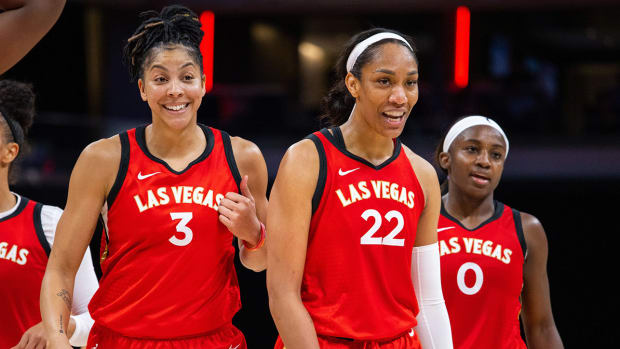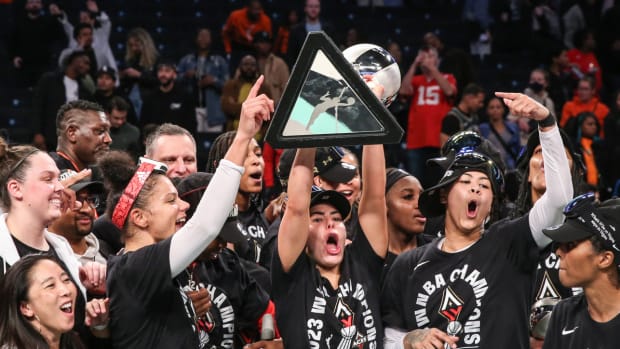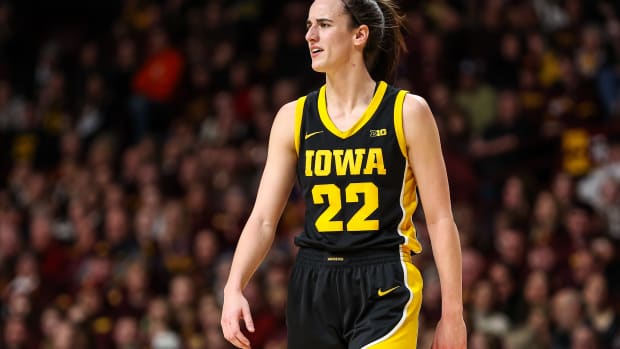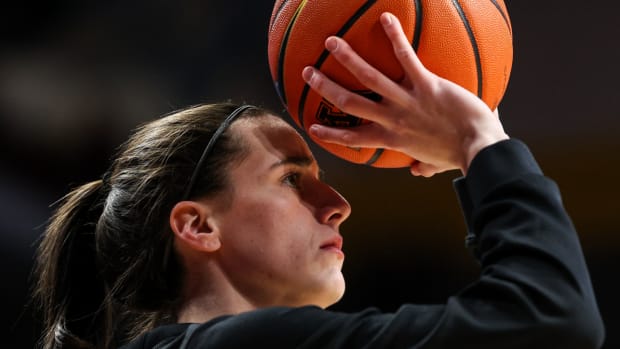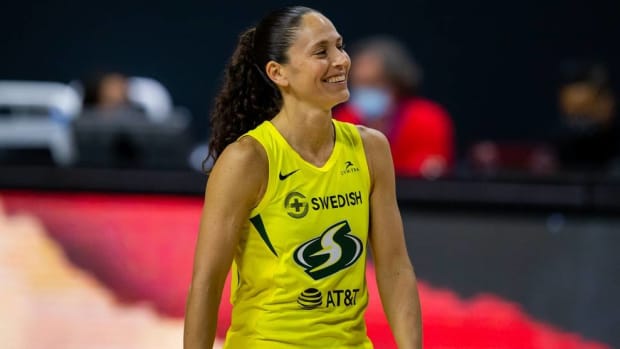Analyzing the WNBA's New CBA Deal and What It Means for the Future of the League
Facing the unappealing prospect of playing the 2020 season without a new collective bargaining agreement in place, the WNBA and the Women’s National Basketball Players Association agreed in principle on Tuesday to a new CBA that, if ratified by WNBA players and the WNBA’s Board of Governors, will run through 2027. The new CBA is poised to provide major improvements in pay and benefits to WNBA players while assuring league officials that their players will prioritize the WNBA over foreign leagues.
A brief history and contextual accounting of the WNBA
The WNBA launched in 1997 largely at the behest of the late David Stern, who served as NBA commissioner from 1984 to 2014. It initially operated as a “single entity” sports league. The league owned the original eight WNBA franchises (as opposed to those franchises having “owners”) and an NBA franchise essentially operated and directed each of these franchises.
During the 2000s, the WNBA grew in popularity and added independently owned franchises—including the Connecticut Sun and Chicago Sky. Along the way, six WNBA franchises folded due to low attendance and insufficient revenue. Five teams relocated.
This type of uneven record is not unusual for a new sports league. It took decades for the NBA, NFL, NHL and MLB to become “major” pro leagues. Each experienced turbulence and disruption long before becoming so dominant in the American sports industry.
The WNBA currently has 12 franchises located across the country. They are situated as west as Seattle, as south as Dallas and as east as Uncasville, Connecticut. The WNBA’s growth in popularity is, on balance, encouraging. While attendance dropped by 3.5% last season, TV ratings jumped by 64%. WNBA games are broadcasted or streamed on ABC, ESPN, ESPN2, CBS Sports Network, NBA TV and Twitter. Each season more WNBA games are available for fans to watch.
In 2014, the WNBA and WNBPA ratified a CBA that was set to expire in 2021. However, four years later, the WNBPA exercised an opt out. As a result, the 2014 CBA technically expired last October (under labor law, the terms of an expired CBA continue in effect while the two sides engage in good faith bargaining—here, both the WNBA and WNBPA were engaged in such bargaining, and it led to their new CBA).
WNBA players and their prioritization of playing in the WNBA
One ongoing challenge for the WNBA is that some players play on two teams, sometimes at the same time. Indeed, a number of WNBA players play professionally overseas, including in China, Israel, Italy, Turkey and Russia. They do so in part because WNBA salaries have been relatively modest. Players understandably seek to supplement their WNBA earnings by playing in a second league.
This arrangement has led to scheduling and roster problems for WNBA teams. Some WNBA players, including stars, are contractually obligated by their overseas team to play in their playoffs. As a result, they miss WNBA reporting deadlines, which sends an implicit signal that the WNBA is not the premier league for women’s basketball. A number of top WNBA players have also suffered injuries while playing abroad. As detailed by Swish Appeal, these injuries raise concerns regarding overuse and wear and tear.
The new CBA addresses this challenge by adopting a prioritization policy. Sports Illustrated has learned that by 2024, players with more than three years of WNBA experience will be obligated to play the entire WNBA season. If they fail to report to their WNBA team because they are playing in another league, they will be deemed ineligible for the entire WNBA season and thus forfeit their WNBA salary. Players with under three years of WNBA experience will be exempt from this policy. The WNBA will grant various other exemptions, including for players to play for their national teams or in the Olympics and for lower-earning players.
The prioritization policy could motivate foreign leagues to restructure their season and postseason schedules so that players aren’t required to choose one league over another. The larger point, though, is that the WNBA wants its players to prioritize the WNBA over other leagues. Just as NBA stars wouldn’t leave their franchises to play abroad, the WNBA doesn’t want its stars to do that either.
WNBA players gain a large jump in compensation and progressive workplace benefits
The WNBPA is comfortable with a prioritization policy because the league has agreed to massively increase player compensation as part of the new CBA.
Sports Illustrated has learned that beginning next season, the WNBA’s salary cap will rise by a stunning 30%, from $1 million to $1.3 million. This jump exceeds recent salary cap percentage increases for NBA players, who over the last few seasons have seen increases of 7% or less. Granted, NBA players earn considerably more than WNBA players—per Basketball-Reference, the average NBA player salary is $7.7 million and the median player salary $3.5 million. NBA players also saw a 35% jump in their salary cap from the 2015-16 to the 2016-17 season due to infusion of revenue from nine-year TV deals worth a combined $24 billion. Still, WNBA players are no doubt pleased their union skillfully negotiated a large and near-future increase in the salary cap.
The expansion of the WNBA salary cap will be joined by other league commitments to appreciably elevate player salaries and earning opportunities. Under the new CBA, players will be able to earn more than $500,000 annually in cash compensation. Maximum salaries will climb to $215,000—nearly double the current max of $117,500. The average cash compensation is expected to be about $130,000, meaning the average WNBA player will earn six figures.
When taking into account base pay, performance bonuses, prize pools for in-season competitions and sharing of team marketing deals, WNBA players will experience a 53% increase in total cash compensation. Plus, players will have earlier access to free agency and, beginning in the 2021 season, owners and players will evenly share revenue.
Salary and other cash compensation aren’t the only metrics by which WNBA players’ employment will improve. They will no longer fly coach. To that end, the new CBA will guarantee that WNBA players fly in premium airline seats, such as comfort or economy plus. Each player will also be given an individual hotel accommodation. Further, the new CBA will contain progressive motherhood and family planning benefits. Benefits will include fully paid maternity leave, a new annual childcare stipend of $5,000, workplace accommodations for nursing mothers and two-bedroom apartments for players with children. In addition, veteran players will be eligible for up to $60,000 in reimbursed expenses related to adoption, surrogacy, oocyte cryopreservation or fertility/infertility treatment.
A new domestic violence policy
The new CBA will also address—and attempt to repair—a subject area that generated negative headlines for the WNBA last season: the absence of a domestic violence policy.
As detailed by Sports Illustrated, Los Angeles Sparks guard Riquna Williams and Seattle Storm forward Natasha Howard were both accused of violence against their partners or former partners. Williams, whom the WNBA eventually suspended for 10 games, faces two felony charges for an incident in which she allegedly attacked and pulled the hair out of her ex-girlfriend. She also allegedly threatened to shoot a man. Howard, meanwhile, was accused of threatening and abusing her wife.
The absence of a WNBA domestic violence policy is particularly striking given that the NBA and NBPA—both of which use the same set of attorneys to negotiate CBAs—bargained the Joint NBA/NBPA Policy on Domestic Violence, Sexual Assault, and Child Abuse in their 2017 CBA. The joint policy is nuanced and authorizes the placement of an NBA player on administrative leave. During this time the player is separated from the team but still paid. The league is able to conduct an investigation without the specter of the accused player still appearing in games. The lack of such a policy in the WNBA contributed to the Sparks playing Williams while she was accused (and is still accused) of violent acts.
Sports Illustrated has learned that the new WNBA CBA will include a detailed policy concerning domestic/intimate partner violence. The policy will largely resemble the joint NBA/NBPA policy. Along those lines, it will include a paid administrative leave component. This component will authorize the WNBA to remove a player from her team for a reasonable period of time. During that time, an investigative body will review the accusations and available evidence. The administrative leave component will give consideration to a number of factors. Those factors include, but aren’t limited to: whether criminal charges have been filed; the seriousness of the allegations; and the player’s past history. The domestic violence policy will also incorporate educational offerings and counseling.
The WNBA isn’t U.S. Soccer
The new WNBA CBA appears to be a “win” for both the WNBA and WNBA players. Each realized its bargaining priorities. The WNBA obtained a prioritization policy and greater control over player misconduct matters. The WNBPA, for its part, secured dramatically improved player compensation and progressive workplace policies.
At a time when the U.S. National Women’s Soccer Team and U.S. Soccer are battling in court over pay disparities and questionable workplace conditions, WNBA players and their league have engaged in productive negotiations. Those negotiations produced a mutually beneficial workplace agreement and, most likely, a more marketable league to fans and consumers.
Michael McCann is SI’s Legal Analyst. He is also an attorney and the Director of the Sports and Entertainment Law Institute at the University of New Hampshire Franklin Pierce School of Law.












